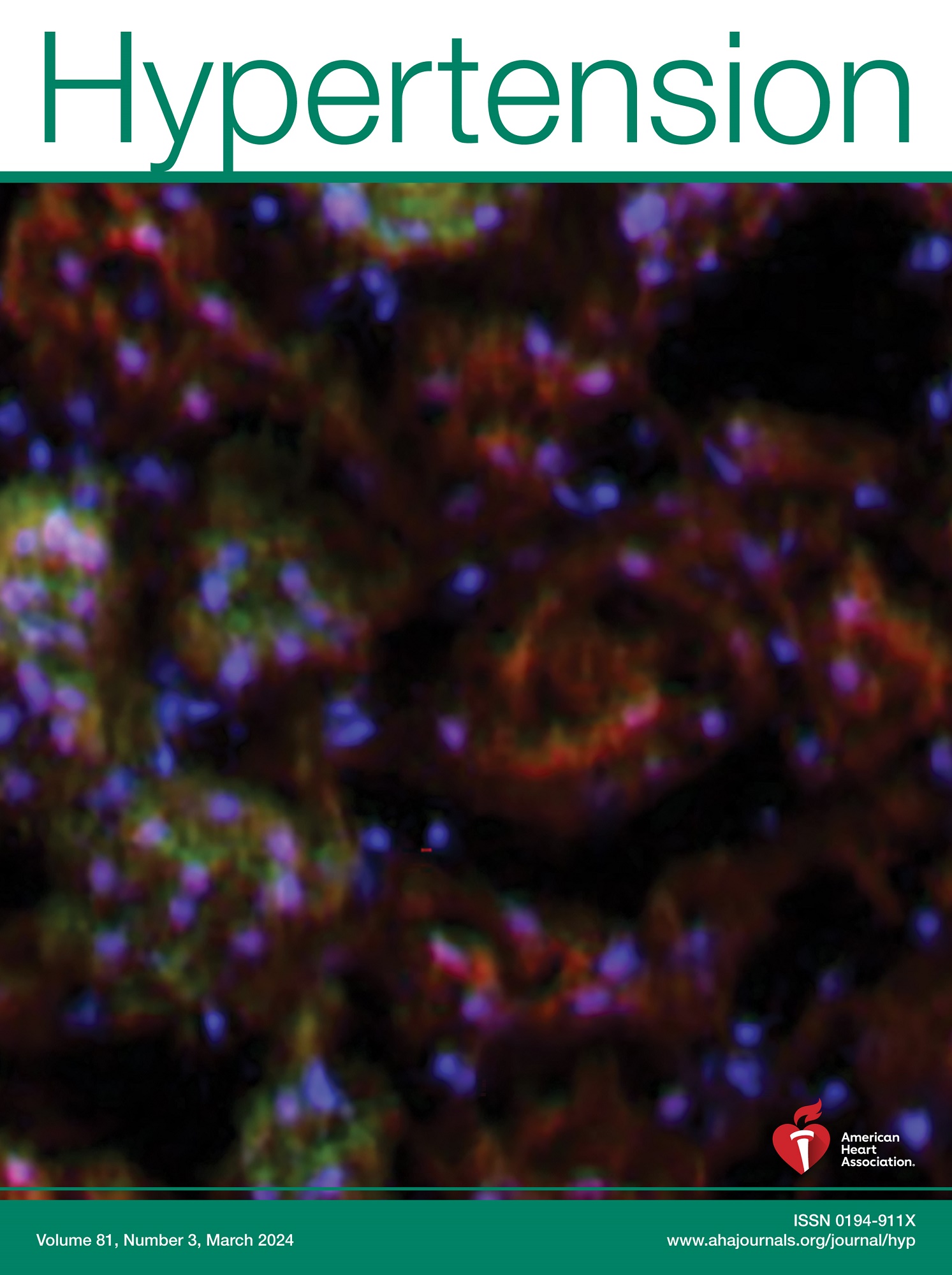Is It Time to Abandon the Kidney-Centered View on the Origin of Primary Hypertension?
IF 8.2
1区 医学
Q1 PERIPHERAL VASCULAR DISEASE
引用次数: 0
Abstract
Traditionally, the kidney has been thought to play a key role in the development of hypertension. Disturbed sodium regulatory pathways can lead to primary hypertension, with abnormalities in the pressure-natriuresis mechanism contributing to its onset. An adverse intrauterine environment and postnatal stressors can affect nephron number, further linking renal development to hypertension risk. The development of hypertension may, however, also be influenced by alternative factors beyond the kidney. Monogenic diseases and polygenic risk scores are associated with hypertension development. Epigenetic mechanisms can influence the phenotype of the vascular endothelium in response to environmental stimuli, potentially leading to changes in blood pressure. Regulation of vascular tone, microvascular rarefaction, and interactions with the immune system are other nonrenal factors contributing to hypertension. The exposome, including air pollution and noise, has its impact already before conception via maternal and paternal influences, as well as later in life. In addition, lifestyle factors such as sodium and alcohol intake and tobacco use have been linked to hypertension through mechanisms such as increased sympathetic activity and vasoconstriction, highlighting the importance of behavioral factors in hypertension development. Age-related stiffening becomes important in later life, influences blood pressure phenotype, and may even precede hypertension development. Considering these multiple contributors, relevant for pathophysiology, prevention, and management of hypertension, the question arises whether the kidney-centered view on hypertension is sufficient or whether a more integrative, multifactorial perspective is needed. Full understanding of renal and nonrenal factors and their interactions driving hypertension is crucial to curb the global burden of this disease.原发性高血压的起源是时候放弃以肾为中心的观点了吗?
传统上,肾脏一直被认为在高血压的发展中起着关键作用。钠调节通路紊乱可导致原发性高血压,而压力-钠尿机制异常可导致原发性高血压的发生。不良的宫内环境和产后应激因素可影响肾细胞数量,进一步将肾脏发育与高血压风险联系起来。然而,高血压的发展也可能受到肾脏以外的其他因素的影响。单基因疾病和多基因风险评分与高血压的发展有关。表观遗传机制可以影响响应环境刺激的血管内皮的表型,可能导致血压的变化。血管张力调节、微血管稀疏以及与免疫系统的相互作用是导致高血压的其他非肾脏因素。包括空气污染和噪音在内的暴露环境在怀孕前就已经通过母亲和父亲的影响产生影响,并在以后的生活中产生影响。此外,生活方式因素,如钠和酒精的摄入以及烟草的使用,通过增加交感神经活动和血管收缩等机制与高血压有关,这突出了行为因素在高血压发展中的重要性。与年龄相关的硬化在以后的生活中变得重要,影响血压表型,甚至可能先于高血压的发展。考虑到这些与高血压的病理生理、预防和管理相关的多重因素,问题出现了,以肾脏为中心的高血压观点是否足够,或者是否需要一个更综合的、多因素的观点。充分了解肾脏和非肾脏因素及其相互作用对抑制高血压的全球负担至关重要。
本文章由计算机程序翻译,如有差异,请以英文原文为准。
求助全文
约1分钟内获得全文
求助全文
来源期刊

Hypertension
医学-外周血管病
CiteScore
15.90
自引率
4.80%
发文量
1006
审稿时长
1 months
期刊介绍:
Hypertension presents top-tier articles on high blood pressure in each monthly release. These articles delve into basic science, clinical treatment, and prevention of hypertension and associated cardiovascular, metabolic, and renal conditions. Renowned for their lasting significance, these papers contribute to advancing our understanding and management of hypertension-related issues.
 求助内容:
求助内容: 应助结果提醒方式:
应助结果提醒方式:


